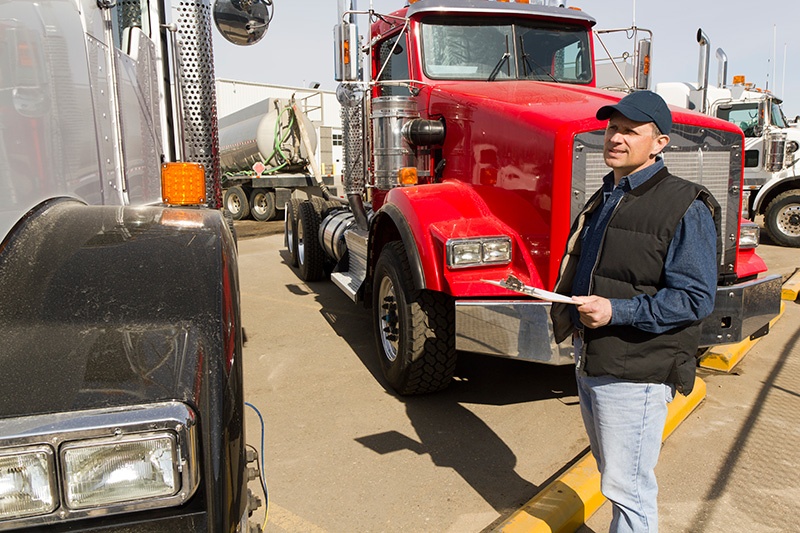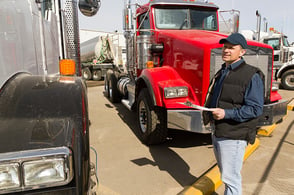Do You Have a Fleet Safety Program?


The number of fatalities and injuries in traffic accidents is not only alarming, it is trending in the wrong direction. According to the National Safety Council, 2015 saw the largest one-year percentage increase in half a century with an estimated 38,300 people killed and 4.4 million injured on U.S. roads.
Just as alarming are the estimated costs associated with those accidents—a whopping $152 billion—including medical expenses, wage and productivity losses and property damage.
Breaking down the costs related to fleet vehicles involved in traffic accidents, the picture is not any prettier. In fact, fleet accidents are among the most costly of injury claims for a business with an average cost of around $70,000.
Compare this to an average of $36,592 for a workplace injury and the message is clear—ensuring the safety of your fleet and drivers is paramount to your operations and bottom line. Establishing a fleet safety program will help you accomplish that.
Getting Started
No fleet safety program can guarantee zero accidents, but what it can guarantee—if thoughtfully planned—are policies and procedures that help ensure a safe work environment, protect you from liability and improve employee safety and satisfaction.
So how do you get started putting a plan in place? Follow along for some key steps to consider for an effective program that protects your people, property and bottom line.
Get Senior Management On Board
Support from senior management is essential in establishing a culture that promotes safety. As leaders, senior management can set policies and allocate resources to create a safer environment and also set an example that encourages involvement at all levels. If senior management is not on board, no one is on board.
Establish Written Policies and Procedures
Create clear and comprehensive traffic safety policies and procedures and communicate and enforce them. Distribute policies and discuss them regularly with employees, including the consequences of failing to follow them.
Get commitment from your drivers by having them sign an agreement that they fully understand the policies and procedures and they agree to uphold them. Assign risk scores to drivers based on an on-going stream of behavioral data and when a driver’s scores rise above an established threshold, make it clear there will be consequences.
Motor Vehicle Record (MVR) Checks
Check the motor vehicle records of drivers and screen out those with poor ones. Review drivers’ MVRs twice a year to make sure they are maintaining a clean driving record and define the number of violations they can accumulate before taking action. Poor drivers mean greater liability.
Driver Training and Education
Driver training and safety awareness are perhaps the biggest factors in reducing accidents and lowering the number of injuries and fatalities.
Educate your drivers behind the wheel and in the classroom and work with them to provide training and seasonal driving tips. With drivers who are highly skilled at their job on your team, your goal of creating a safer culture is more easily realized.
Accident Reporting and Investigation
Have procedures in place to report and investigate accidents. Make it policy that all accidents are reported to the proper manager and make clear the steps drivers need to follow after an accident. When an accident occurs, review it, determine its cause and what steps are necessary to prevent similar accidents in the future.
Vehicle Selection and Maintenance
Knowing what features new vehicles need, plus properly maintaining and inspecting all vehicles helps cut down on accidents, breakdowns and faulty equipment.
For new vehicles, carefully consider what safety features are necessary. For example, do they need forward collision warning, lane departure warning, blind spot detection or maybe adaptive headlights?
Put all vehicles on a preventative maintenance schedule and have them inspected at least annually with results documented in a vehicle file.
Technology
Leveraging technology, no matter the size of your fleet, can further reduce accidents and related costs. Telematics programs are ever evolving to cover driver safety, increase productivity, route compliance and improve customer service. Drivers should be made aware that telematics technology is there to support them and help them be better drivers.
In addition to safety features mentioned in the section above, you may want to look into technology that disables cell phones while a vehicle is in motion, or crash avoidance technology for new vehicles or for refitting your older ones.
The Bottom Line
Improving safety and reducing accident costs is all about communication and compliance—communication between all fleet stakeholders and compliance with all policies and procedures.
It takes a team effort. And it is everyone’s job.